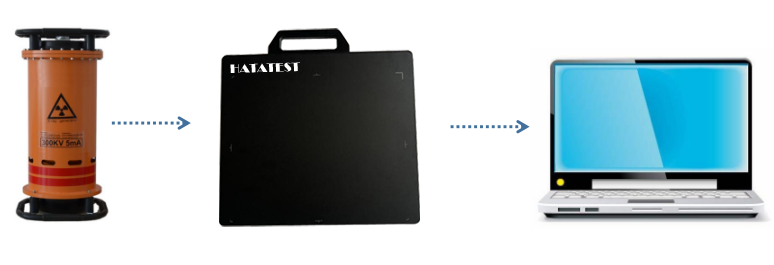
Non-destructive testing technology is a new technology that emerged with the development of high technology. Non-destructive testing technology is different from traditional physical and chemical analysis methods. It mainly uses physical methods such as optics, electricity and acoustics to analyze the product without destroying the sample, and ensures the integrity of the sample when the sample information is obtained. The detection speed of non-destructive testing technology is faster than traditional physical and chemical methods, and it can effectively judge the internal quality information of samples that cannot be obtained from the appearance. With the rapid development of computer technology, the development of chemometrics has been greatly promoted. X-ray non-destructive testing technology has been widely used in non-destructive testing technology.
There are many types of rays, and there are three types of X-rays, Y-rays, and neutron rays that are easy to penetrate. These three kinds of rays are used for non-destructive testing. The most important application of radiographic testing is to explore the structural condition inside the test piece. Radiation detection can be divided into many different methods according to different characteristics. Radiography refers to a non-destructive testing method in which a test piece is penetrated by X-ray or Y-ray and a film is used as a device for recording information.
Principle of radiography
X-rays are generated from a ray tube, which is a two-pole tube. The cathode filament is energized so that the incandescent electrons are released in a vacuum. If a voltage of several tens of kilovolts or even several hundred kilovolts is applied between the two poles, the electrons accelerate from the cathode to the anode method, and a large kinetic energy is obtained. When high-speed electrons strike the anode, they interact with the extranuclear Coulomb field of the anode metal atoms to emit X-rays.
When a ray is transmitted through an object, the absorption and scattering characteristics occur, and the defect in the side of the material is measured by the influence of the defect in the material. When X-rays and Y-rays pass through a substance, its intensity gradually decreases. An important property of ray is that it can make the film sensitive. When the X-ray or Y-ray illuminates the film, like the ordinary light, the silver halide in the film emulsion layer can produce the latent image center, and after development and fixing, blackening. The more the ray is received, the higher the degree of blackening.
The exposed film is developed, fixed, washed and dried in a dark room, and then the dried film is placed on a viewing lamp, and the blackness image of the defective portion on the film is different from that of the defect-free portion. It is possible to judge the type, quantity, size, etc. of the defect, which is the principle of radiographic inspection.
-
 Sales@hata-ndt.com
Sales@hata-ndt.com -
 +86 371 63217179
+86 371 63217179










